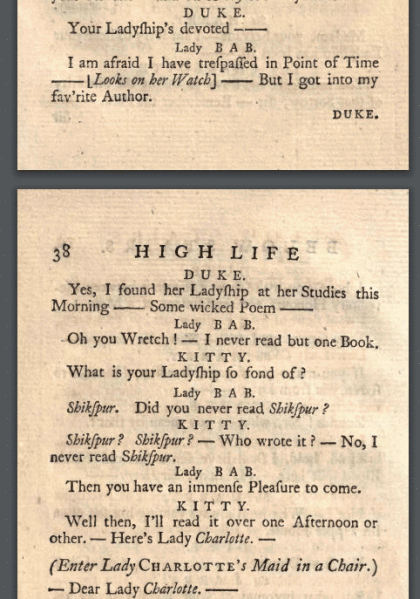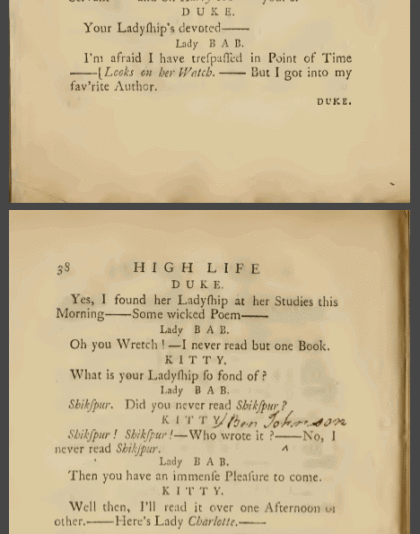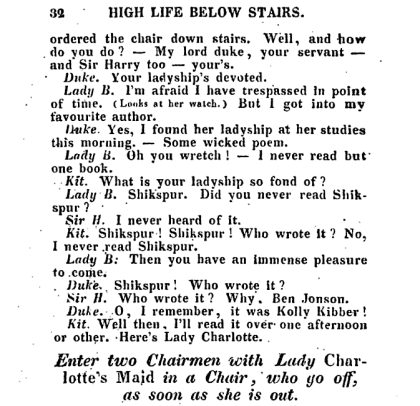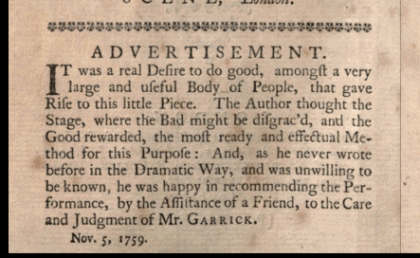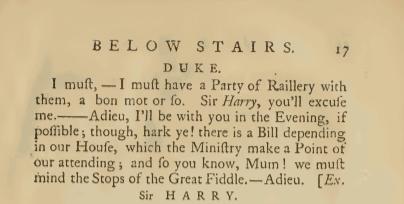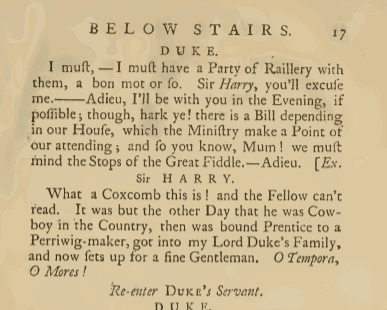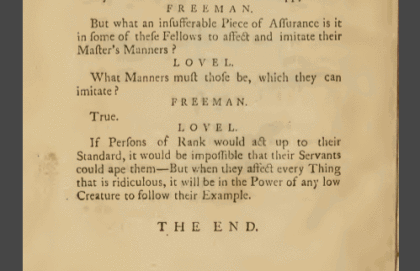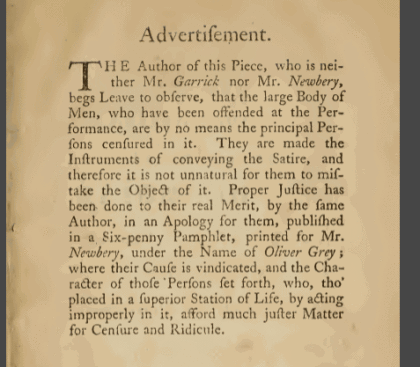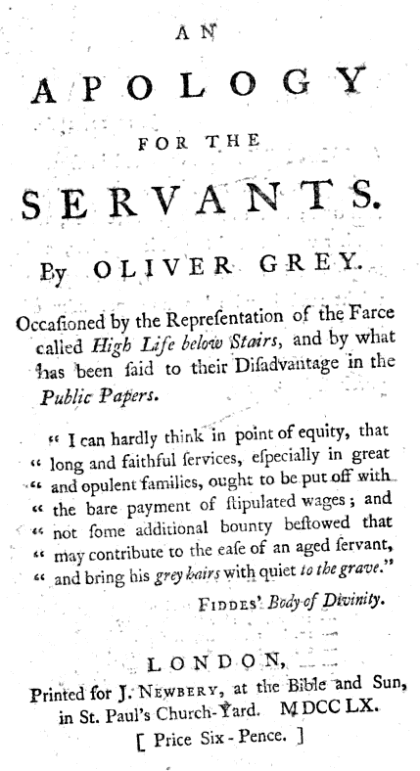Shikspur? Who Wrote It?
Unpublished Draft in Private Circulation. Please do not Share link.
The Festival Robe is back. There is much new content to cover, but I’d like to begin with a brief refresher on what is one of the principal ideas of our unfolding hypothesis concerning Shakespeare’s authorship. That idea is contained in Thomas Nashe’ “The Unfortunate Traveler.” first published in 1594. The novel, considered the first historical novel, is set in the time of Henry VIII. Yet it is accepted that it is, in part, a portrayal of contemporary people and/or events of Nashe’s time. The novel is narrated by a page, Jack Wilton, who serves the Earl of Surrey, the poet who invented the Shakespearean sonnet form, and relative of Vere. In the novel, he is a lover of all things Italian. So, what contemporary of Nashe was an Italianate, poetry loving Earl? Edward de Vere. Here Jack Wilton explains the device.

click to enlarge
We’ve encountered Vere figures using disguises to move lower in the social strata over and over again. This Nashe example is nice as it supplies a reason, “to take more libertie of behavior.” This theme will resonate strongly in subsequent posts. Yet first, we are moving forward to the 19th century, and the (supposed) origins of authorship doubts.
Chuck Berney’s work identifying allusions to Edward de Vere in the works Sir Walter Scott early in the 19th century is our starting point. Sir Walter Scott’s “The Monastery” has a Vere figure, whose secret is a heritage as a Taylor (pardon me for spoiling the story) and a bodkin is a central device in the work. I thought it curious that Robert Armin’s “The Italian Taylor and the Boy,” which also allegorizes Vere as a Taylor was reprinted on its 200th anniversary in 1809, the era when Scott was active. Why was there an interest in that work? The possible connection intrigued me, and I began research into Scott’s views on Shakespeare. What I found was an entry in Scott’s Journal dated March 2, 1827. That entry is below.
click to enlarge
The entry is fascinating, as it’s recalls a Shakespeare authorship joke, with first, Ben Jonson, and then “Finis,” and finally Scott himself as the punchline. Scott’s Waverly books were originally published anonymously, making the joke humorous to audiences of the period. The next obvious question is; Did this joke originate earlier in this play? Or is it an extemporaneous ad lib from the period? Regardless, the joke does place Shakespeare authorship as a topic in the 1820s, earlier than the previously understood origination of the topic in 1852.
I then found an early printed version of the play in question, High Life Below Stairs. The page below reproduces the joke as it appeared in that first edition of 1759.
click to enlarge
1st edition, 1759
We can see the exchange is different than what is reported in Scott’s journal. The question “Shikspur – Who wrote it?” is there, but unanswered. The seed of the joke seems apparent. But here the meaning is open to interpretation. We can understand the question as Kitty thinking Shikspur is the title of the book, not the author, at which point the authorship connection disappears. However, her question remains unanswered, so that explanation is not entirely satisfying. At the time, because this play didn’t answer that question with “It’s Ben Jonson” as reported in Scott’s journal, I dropped my pursuit.
I took up the hunt again recently, determined to learn more about the background of this play as well as the possible authorship joke reported in Scott’s journal. Now the article credited as “beginning” the authorship controversy, published in Chamber’s Edinburgh Journal, 1852, opens with that very joke. The punch line does not reference Sir Walter Scott. The article notes this joke drawing big laughs in the theater.
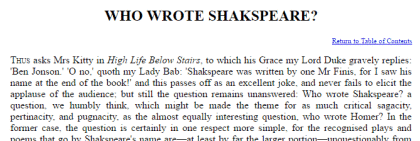
click to enlarge
Still more Googling turns up some late 19th century inquiries into the play, High Life Below Stairs, including some questioning what is the earliest date that the joke appears in print. That is my interest as well. One of these sources printed a slightly different version of the joke, with the second proposed author being one “Kolly Kibbur” Here is an excerpt from that article in the North American Review vol 145, No 372.
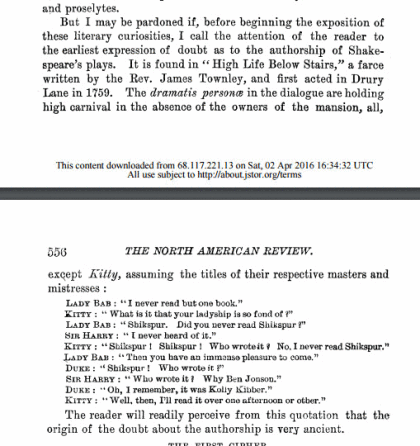
click to enlarge
There is no date on this version, but it appears to come from a printed play, not from a recollection of a theatrical performance. The Scott journal entry is a report of a performance, and the Edinburgh Journal entry given its discussion of applause a performance report also. All of these so far are in the 19th century, with the most solid early date the Scott journal of 1827.
Now here’s the 7th Edition from the original publisher printed in 1763. This copy is on archive.org as pdf.
click to enlarge
7th edition, 1769 – with annotation ” ^ Ben Johnson”
Here’s the joke is identical to the 1st edition shown above. This copy has an annotation, with “Ben Johnson” above and a “^” below immediately after the joke’s set up, “Who wrote it [Shikspur]?” Of course, we can’t date the annotation, and it may very well be 19th century. But it is more likely the annotator is 18th century (given the many, many subsequent editions) and it is highly likely the annotator knew the joke from the theater. Here we are accumulating many independent observations that an authorship joke is connected to this play, High Life Below Stairs, an 18th century work.
Next up is another edition of the play, “Campe’s Edition,” in 1835. This one is on Google Books. The date doesn’t appear in the text, but it is the date that Google books lists next to the entry.
click to enlarge
This version of the joke contains the Kolly Kibber punchline, but it’s more awkwardly worded, as it appears inserted after Lady B’s line “Then you have an immense pleasure to come.” In the version quoted in the North American Review, the joke occurs before the that line. But this 1835 date is now the earliest printed reference to the specific joke I’ve found, as opposed to the reports of the joke’s performance recorded in 1827 and 1852.
We have so far, three versions of the punch line, Ben Jonson/Finis/Walter Scott, Ben Jonson/Finis and Ben Jonson/Kolly Kibber. Which came first, and do any date from the 18th century? Colly Cibber was an actor/playwright who passed away in 1757, two years before the premier of High Life Below Stairs. He was reportedly a very good, and beloved actor, and a horrendous playwright. The joke referencing him would have been topical and funny to audiences in the 1760s and 1770s. By the 19th century, the joke would need freshening, he was forgotten. Hence we see the Sir Walter Scott and Finis variations used at that time. So though we lack a dated printing of the joke in the 18th century, the “Kolly Kibbur,” punchline, topical in the 18th century and missing from theatrical reports of the 19th century argues the joke originated with dates from the earlier period.
It is time to look at this play more in depth, specifically looking for allusions to authorship, Shaxper and Vere.
The play debuted in 1759, and was wildly successful. It concerns a wealthy Jamaican plantation owner who disguises himself as a boy training for service in order to learn whether his servants are cheating him. Most of them were stealing him blind. As in Downtown Abbey, the servants all address themselves with the names of the nobility they serve. The servants are pretending to be nobility and vice versa. All topsy turvy. Shades of Thomas Nashe’ Earl of Surrey and Jack Wilton.
Let us begin with the announcement here, from the 1st edition, that appears just below the Dramatis Personae
click to enlarge
The author of High Life was “unwilling to be known” – but he makes sure EVERYONE knows he’s anonymous! Hey look at me! Anonymous authors do not usually want attention drawn to themselves. This gentleman wants you to know there’s a hidden author! We also see the play arrives to us from the “Care and Judgment” of David Garrick, the famed Shakespearan actor and promoter of the famouse Stratford-upon-Avon jubilee in 1769. Excuse me? We have a play with possible allusions to Shakespeare authorship and it is a David Garrick production?
Rambler has taught me that when you encounter a passage in a play that bears no resemblence or relevance to the plot or action or anything, you are probably looking at an allusion. And here, on page 17 of all the early editions, the words of the Duke’s servant to Sir Harry’s servant as he’s about to leave seem come from out of nowhere. Read from “hark ye” – which is the author telling us to pay attention.
click to enlarge
Bill? House? Ministry? This sounds like politics. Mum? “Stops of the Great Fiddle?” This sounds like a thing that shouldn’t be discussed for political reasons. The Duke’s servant is telling Sir Harry not to talk about a sensitive political topic. Clearly we are alerted that the next passage is probably an allusion to ‘that which shall not be named.” Here are both passages together.
click to enlarge
He’s country cow boy who can’t read who apprentices to a Perriwig maker and then then gets into the Duke’s “Family.” He’s a “fine Gentleman” now. Yes, here is Will Shaksper, the one familiar to authorship skeptics everywhere, in a play produced by David Garrick. The passage closes with a bit of Cicero, O Tempora, O Mores! Now playwrights love to weave a little Latin to communicate things without the common folk catching on. But that Cicero quote; “What Times, What Customs!” is not exactly out of reach. It’s import is clearer when we understand its’ source, from Cicero’s second oration against Verres.
There is more that is interesting, but let’s get to the denoument, where the author gives us a personal opinion.
click to enlarge
WOW! The nobleman is a victim to being aped by his servants, because of his ridiculousness.
Classic victim blaming. If Vere had simply behaved as a nobleman, he wouldn’t have been impersonated by a commoner. It’s his fault! The description of the nobleman here is noteworthy. “affect[s] every Thing that is ridiculous.” This description is consistent with the Vere allusions unearthed by Rambler, critically described as the “ass-genius” and “idiot-savant.” The hidden author’s description is consistent with Chapman’s Sir Gyles Goosecappe, the quintessential Vere character of early 17th century.
There was some fallout from this play. Servants were quite upset at how they were depicted as thieves. They took the satire as a personal affront. Reportedly there were skirmishes in the footman’s gallery during a performance. The author followed up quickly with a pamphlet “An Apology to Servants” explaining he had once been a servant, and that service was not the target of the play’s satire. For the pamphlet, the author did attach a pseudonym. Here’s the advertisement for that pamphlet from the back of the seventh edition of the play. Pay close attention to the name the author used. Rambler’s students will find it especially satisfying.
click to enlarge
Oliver Grey
Students of Rambler just spit their drink seeing that name. Is there a better allusive name to Vere than Oliver Grey? It’s a thing of beauty.
click to enlarge
Turning back to Campe”s edition of 1835, here’s some of the commentary from the introduction.
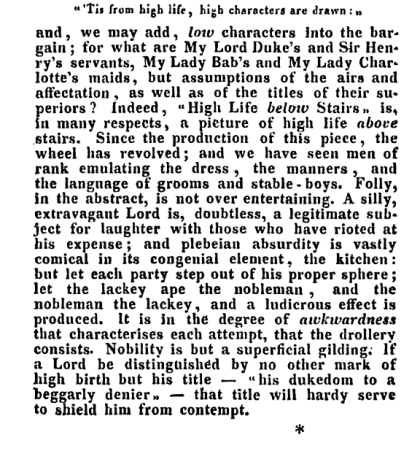
The target of the satire is a “silly, extravagant Lord” who is a legitimate subject for laughter. The sentence that jumps out is, “let the lackey ape the nobleman and the nobleman the lackey, and a ludicrous effect is observed.” High Life below Stairs tells us what the consequnces were when Nashe’s earl and page switched places. Both plays are describing the topsy-turvy relationship between Edward de Vere, the 17th earl of Oxford and his page/servant, Will Shaksper.
Future postings will examine the works to connection to Mr. Garrick and its timing relative to the famous Stratford Jubilee of 1769.

